Concrete, steel and glass – solid industrial materials that are most commonly used to build high-rises in the city realm – create an image of skyscrapers as dead lifeless structures opposed to the vibrancy of nature. Joining a trend of ‘vertical garden’ architecture, architects across the globe attempt to shift the paradigm from industrial to natural, introducing lush greenery into otherwise gloomy city towers.
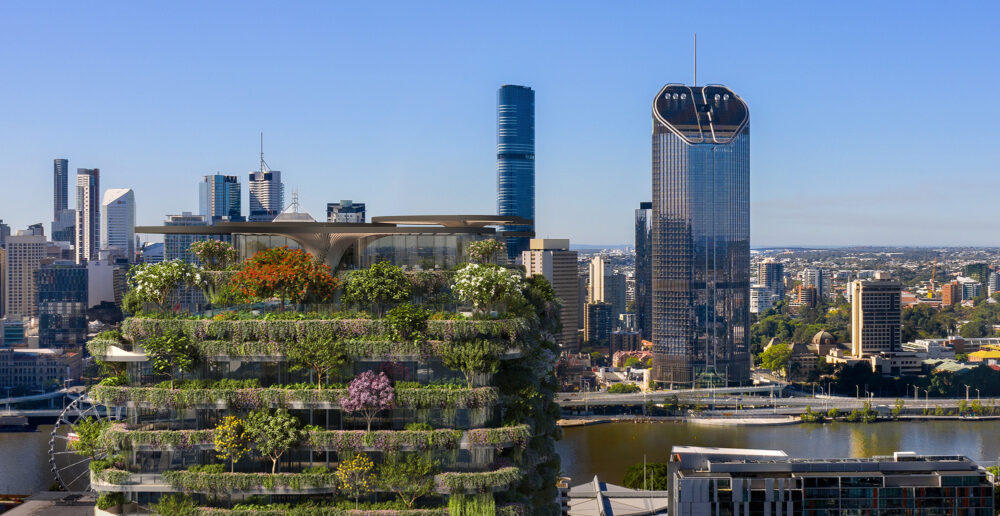
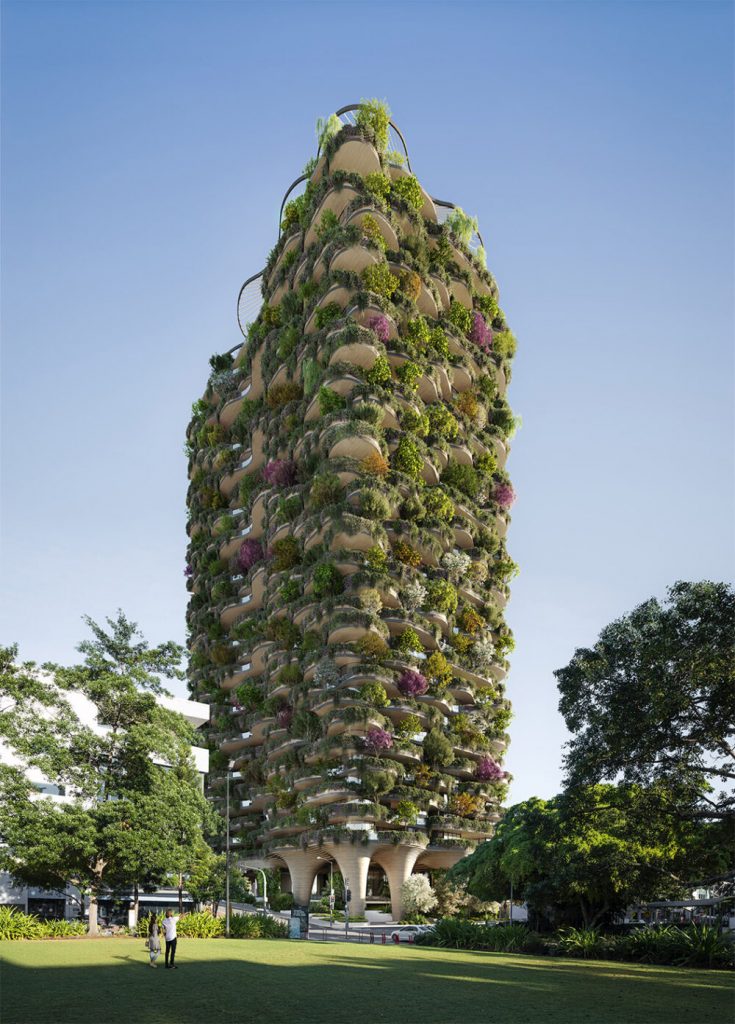
Urban Forest by Koichi Takada Architects (also header image)
Australian architecture practice Koichi Takada Architects has developed a new mixed-use tower for the cultural precinct of South Brisbane, Australia. Aptly named Urban Forest, the project is designed with the ambition to become the world’s greenest residential building. To reach the goal, the living façade will feature over 1,000 trees and more than 20,000 plants selected from 259 native species, which will provide natural thermal and solar insulation.
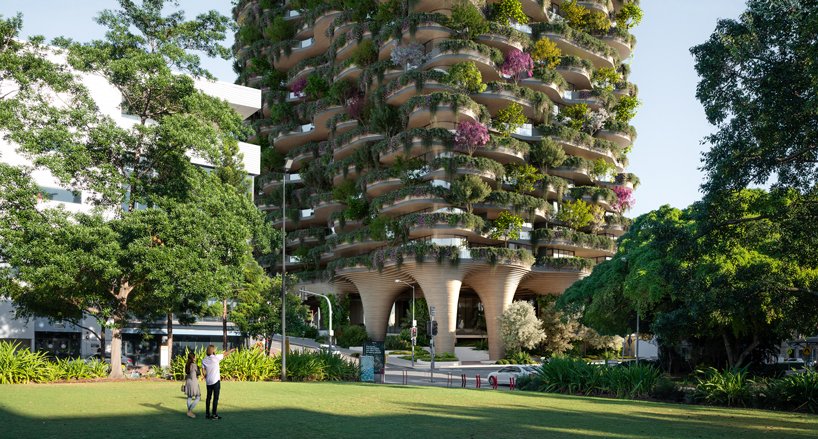
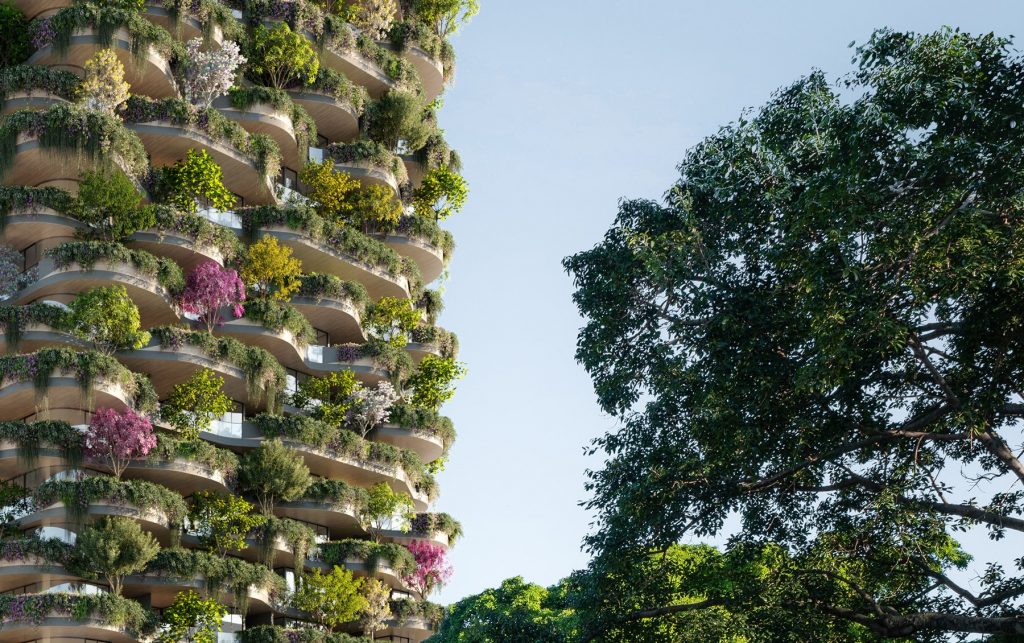
Urban Forest by Koichi Takada Architects
The 30-storey building includes 382 apartments, a two-level rooftop garden and residential amenities, and an open public park on the ground level, which becomes an extension of the surrounding parklands. Laid in a staggered level arrangement, each apartment will have their own Australian veranda-style balcony covered in greenery to provide natural shade and insulation from the sun, wind and rain. Other sustainable features include solar panels to generate renewable energy, gardens irrigated by harvested rainwater and grey water collection, carbon offset, and the use of sustainably-sourced and high quality, low maintenance materials.
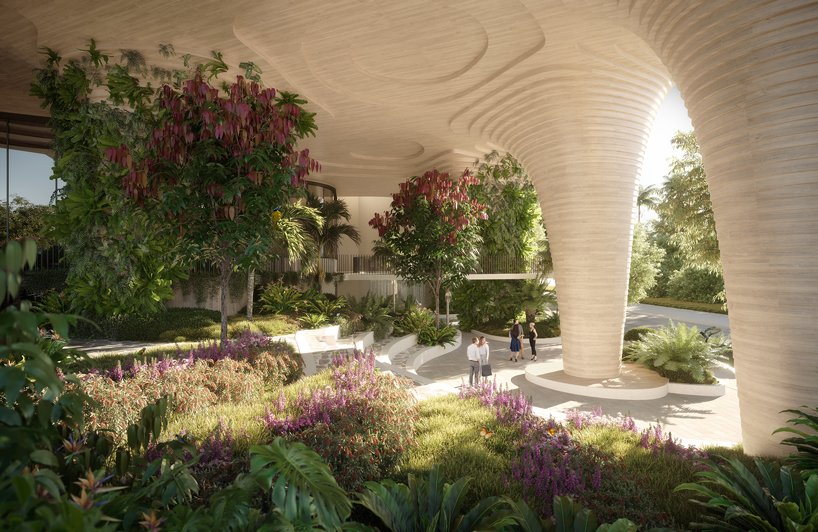
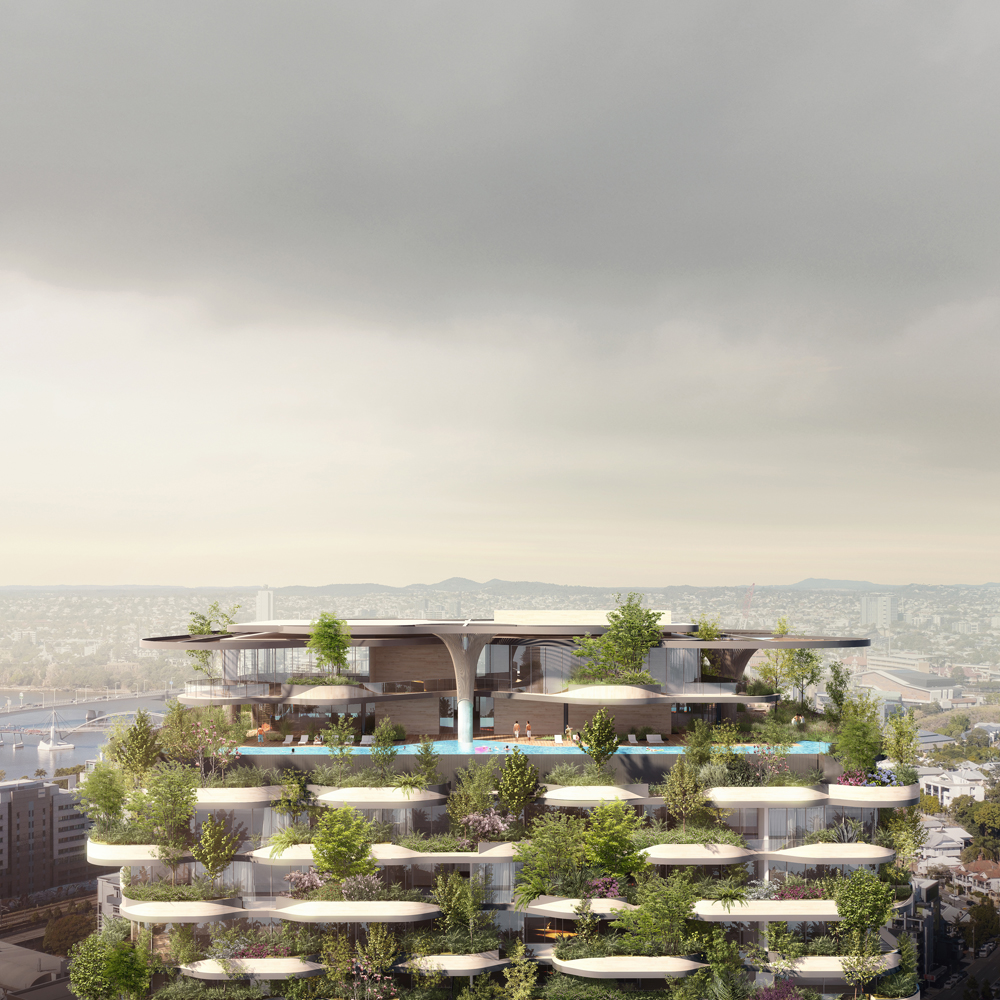
Urban Forest by Koichi Takada Architects
Residents will also have access to a rooftop wellness garden complete with a communal swimming pool and various social communal spaces. By integrating private and public spaces, Urban Forest seeks to restore a sense of community and create ‘breathing spaces’ for social interaction that will help reduce the kind of isolation experienced in high rise residential living.
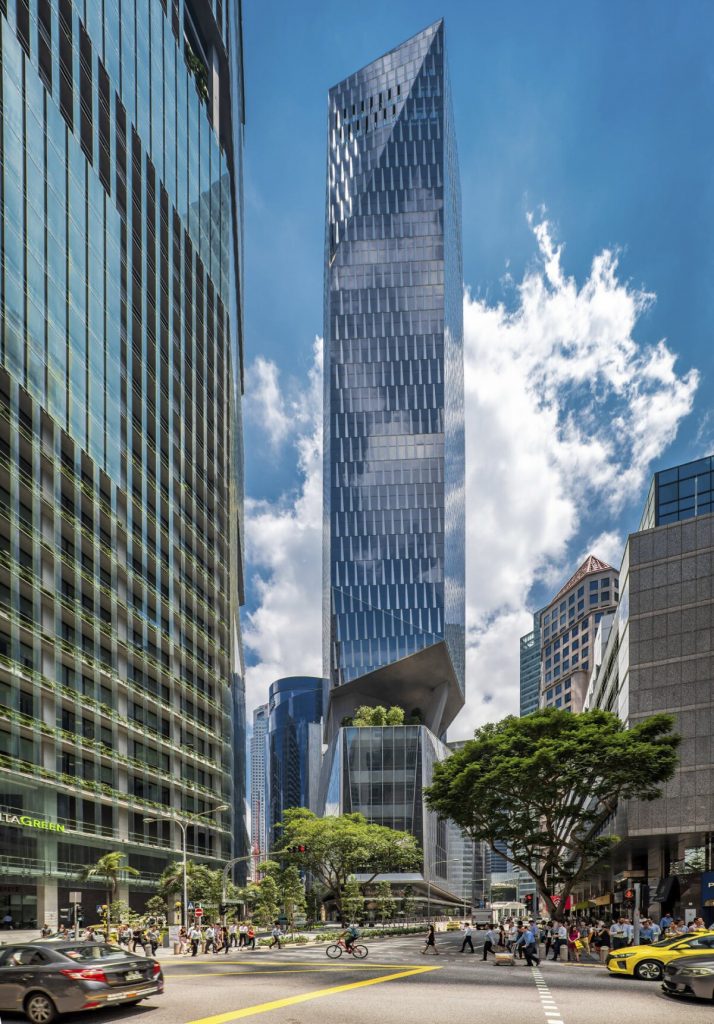
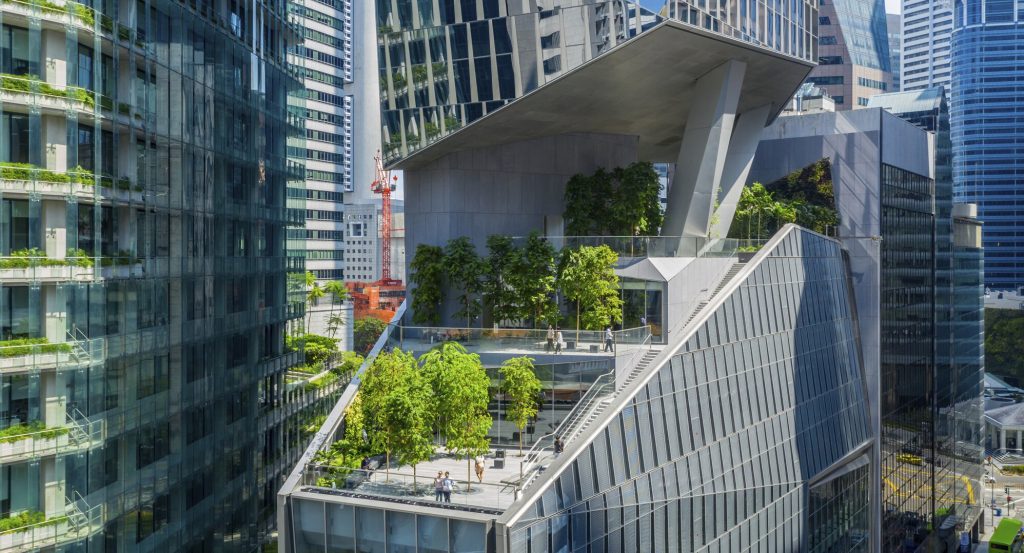
18 Robinson by Kohn Pedersen Fox Associates
International design practice Kohn Pedersen Fox Associates (KPF) has collaborated with associate architect A61 to create a high-rise building in Singapore that seeks to promote ‘sustainable urbanism.’ The faceted tower comprises two primary volumes – hovering crystalline office tower and an elevated retail podium. The podium enhances the spaciousness and continuity from the ground level entrance into the atrium garden, which forms the nucleus where the office lobby, retail and food and beverage spaces converge, while floor-to-ceiling windows facing the busy street encourage a dialogue between the interiors and the streetscape.
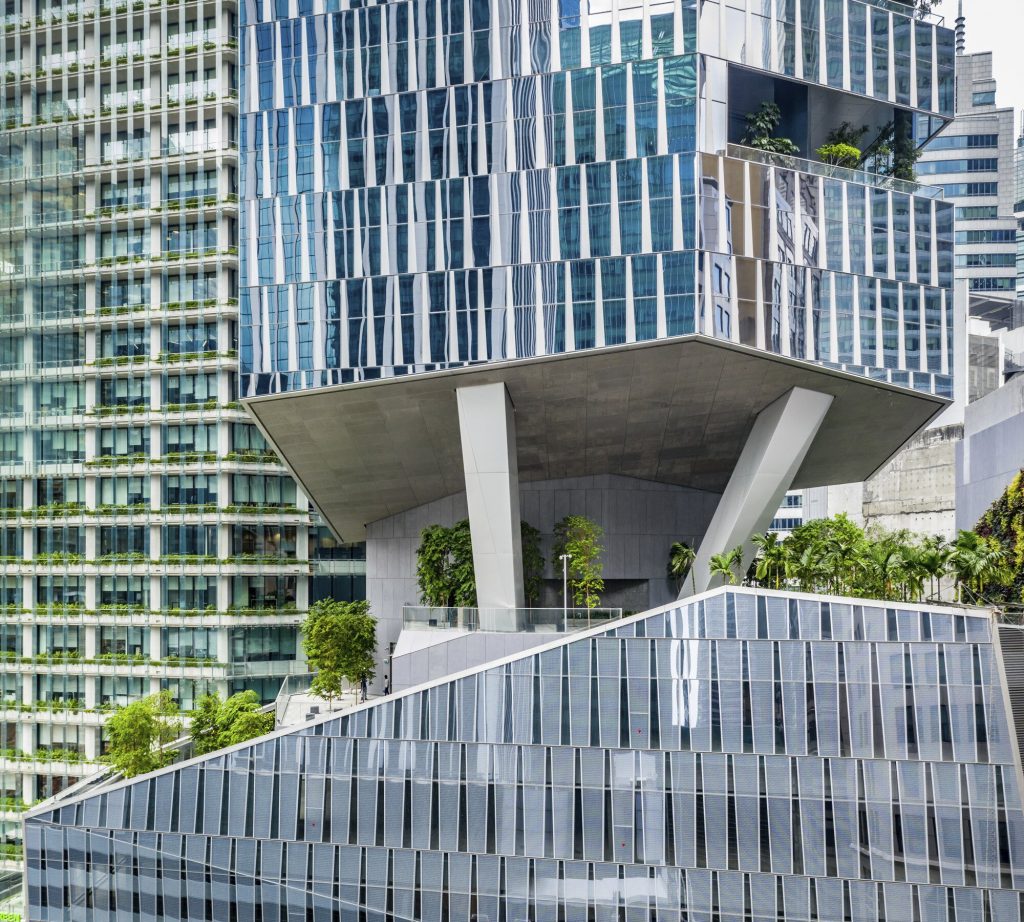
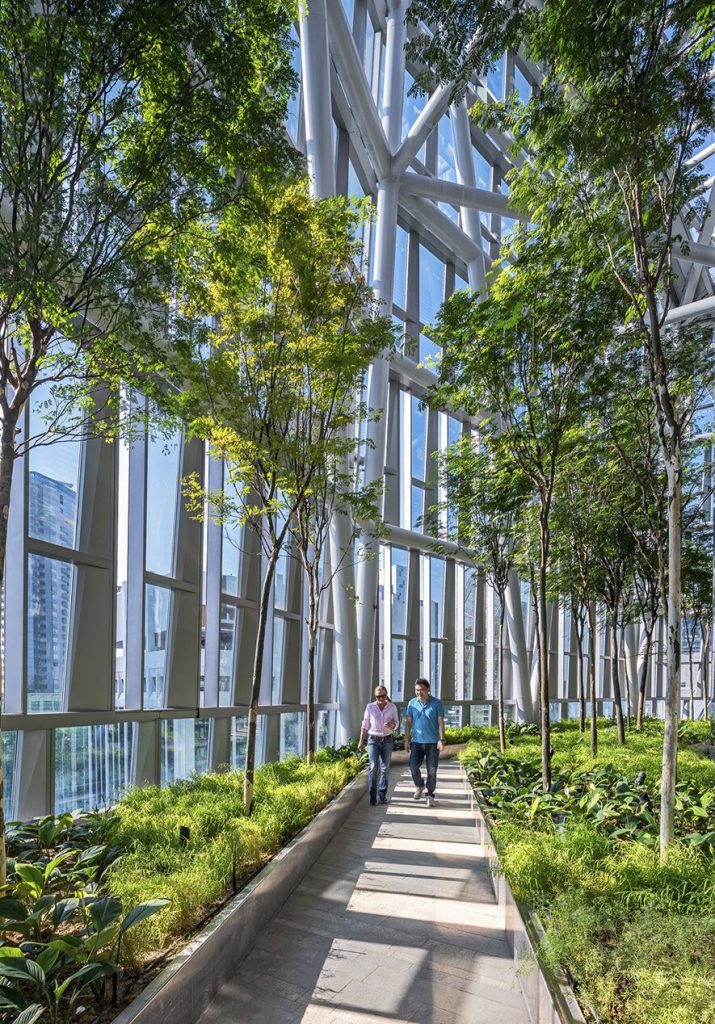
18 Robinson by Kohn Pedersen Fox Associates
The landscaped podium and rooftop Sky Garden feature planted trees and natural ventilation, keeping with Singapore’s Landscape Replacement Area policy which requires that any greenery lost due to development must be replaced with publicly accessible greenery in equal area within the new building.
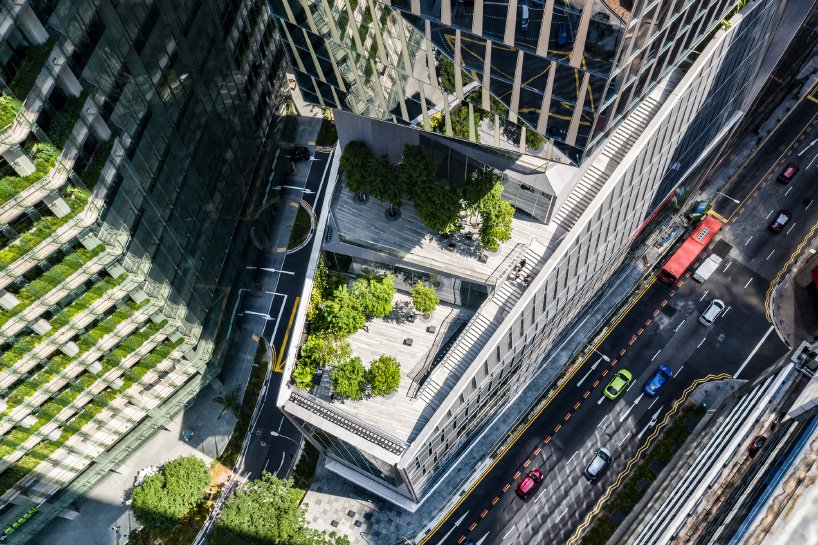
18 Robinson by Kohn Pedersen Fox Associates
Twenty office floors extend elegantly above the podium, maximizing the building height and marina views. The angled composition of the tower serves to increase access to natural light, as well as seeks to dematerialize and reflect the sun and sky in different ways. The tower’s offset core doubly maximizes views from the podium and avoids the issue of columns disrupting the public area.
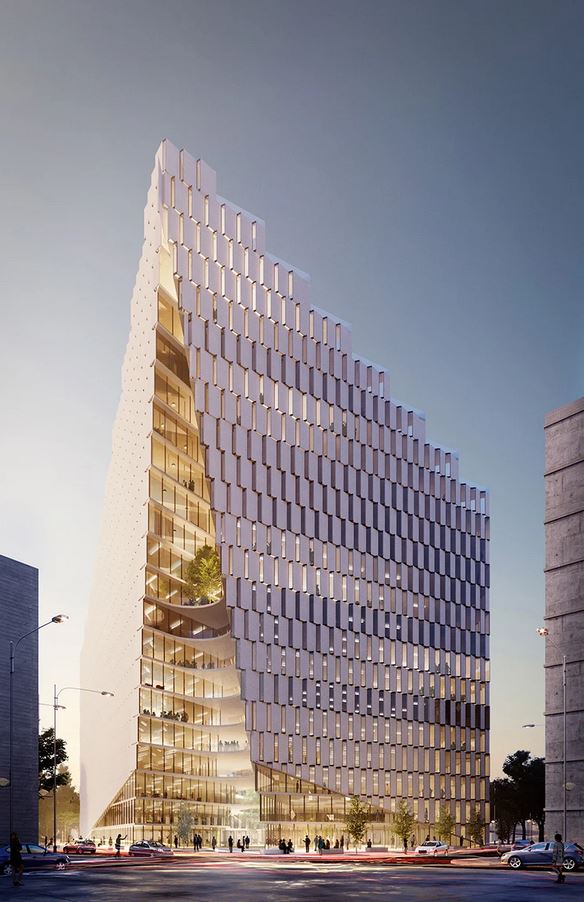
Ekspozita building by Mario Cucinella Architects
The new mixed-use complex in Tirana is designed by the Italian practice Mario Cucinella Architects (MCA) to create an inviting ‘green oasis’ in the city centre of the Albanian capital. The design of the 93 m high Ekspozita building, which resembles the nearby Mount Dajti by its curving shape, covers a total of 24 storys with the levels split according to their function.ю
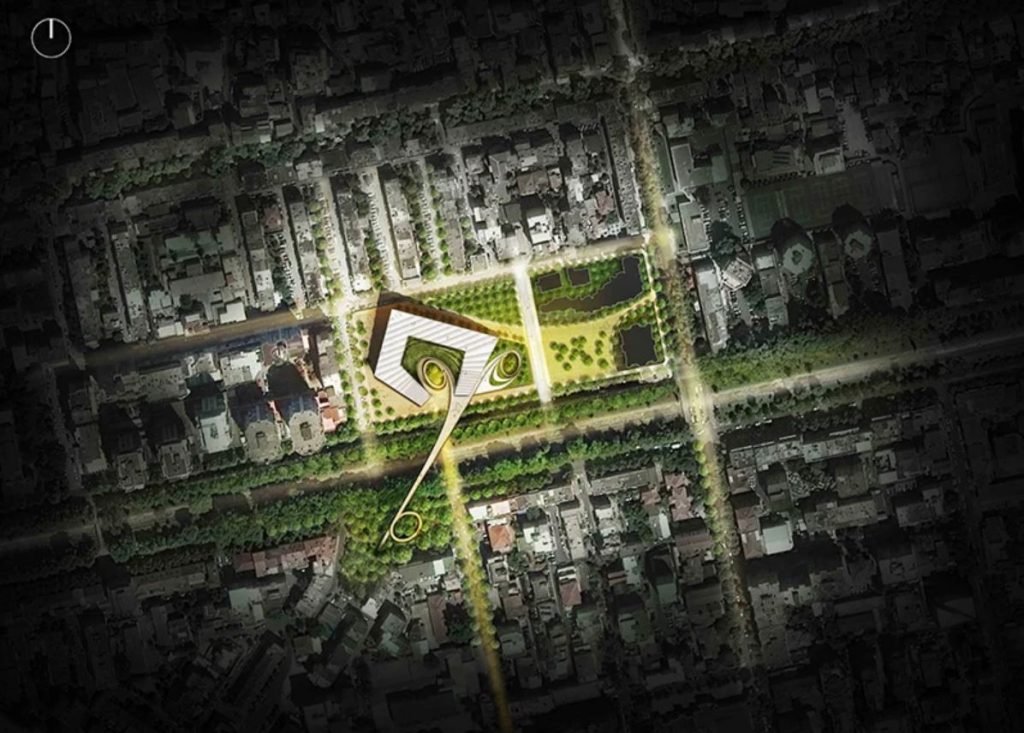
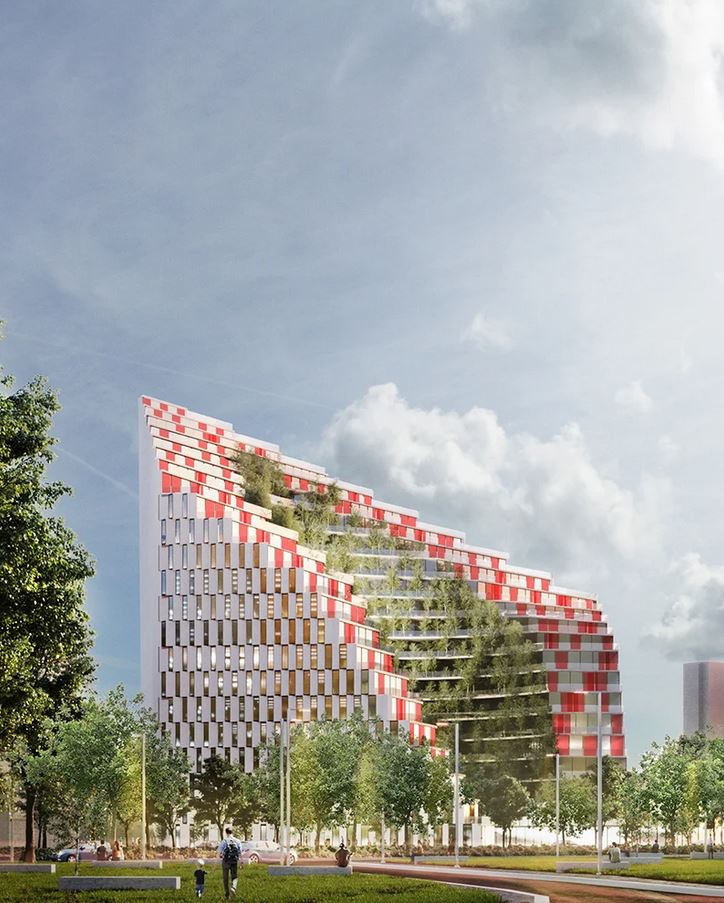
Ekspozita building by Mario Cucinella Architects
The lower ground levels contain parking facilities and a leisure and healthcare complex, above these commercial, office and educational spaces are situated, while the higher levels are reserved for the large residential program. On these levels, the architect has incorporated generous planting to establish a connection to nature, while the inward-facing balconies afford privacy protecting occupants form the noise of the city. In addition to the main volume, the project also includes a much smaller two-story building that will be used as a kindergarten.
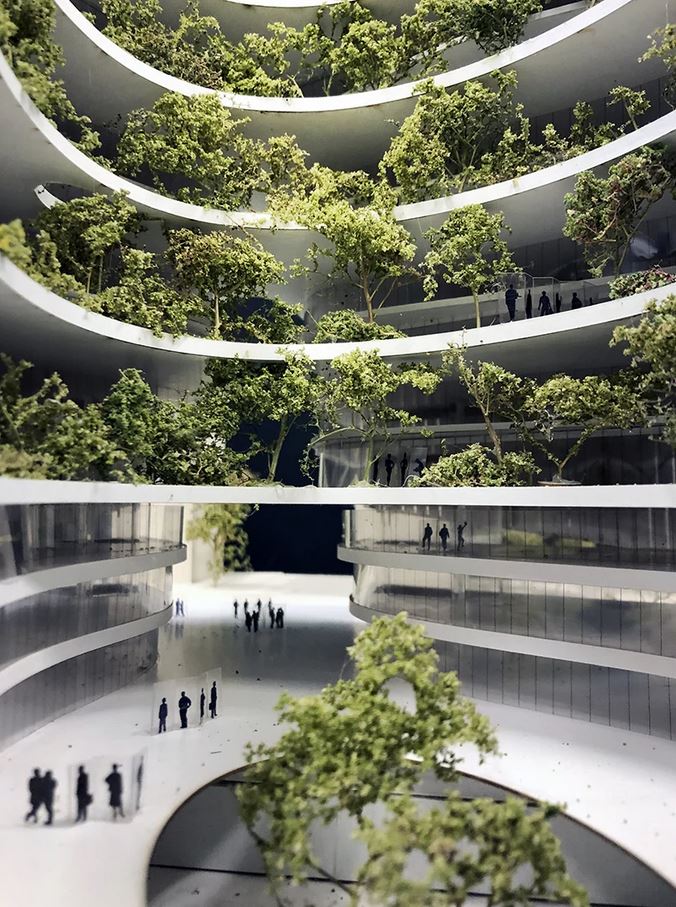
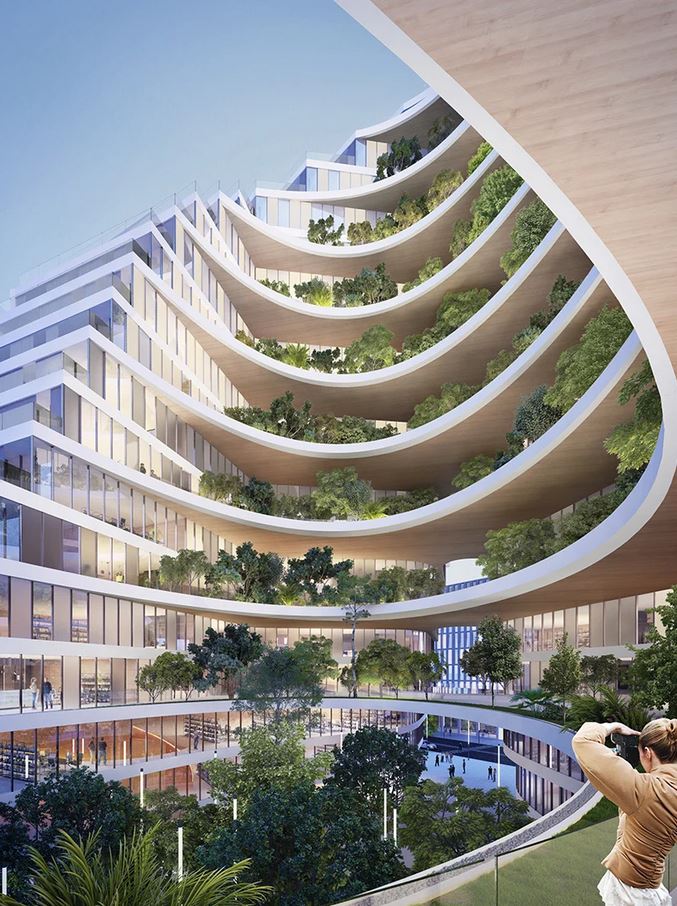
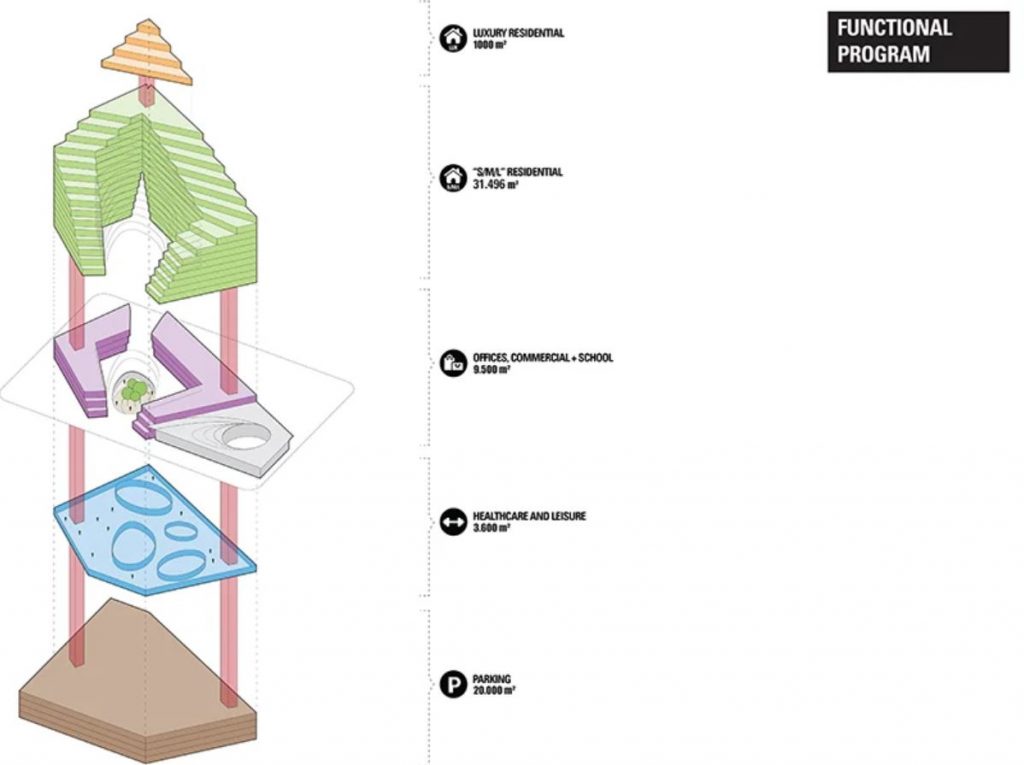
Ekspozita building by Mario Cucinella Architects
Addressing the issue of Tirana’s humid climate, the architect has used solar shading to prevent heat gain in the generously glazed building during hot summer months when temperatures peak at 30°C. Additionally, the large terraces of the apartments act as passive solar regulators. In spring and autumn the structure will need no heating or cooling thanks to its insulation. In general, these strategies will result in the building using 30% less energy than other, comparable developments.